Retail CLM – 4: Compliance Support Systems
- By [ Tiffin Shewmake ]
- 05/03/2018
This fourth article on the dimensions of The Compliance Leadership Model (CLM) is focused on the processes and tools that underpin an effective compliance program.
Today we are looking at the dimensions related to Compliance Support Systems.
Compliance Support Systems—training, communication, documentation and emergency response— are elements that are needed for a fully functioning compliance program. For some, this means elements that are closely tied to legal requirements. For others, these areas can help them go beyond compliance to build systems that help reduce the potential for environmental harm and improve the organization’s sustainability.
Dimension 14 |Awareness, competence, and training
Because facility staff are the ones who implement compliance programs, training is a foundation for maintaining compliance. Related to training, is the competence and skills needed for positions with environmental compliance responsibilities. Companies with a focus on environmental performance, not just compliance, tend to require a higher level of environmental expertise and reward staff for good environmental performance.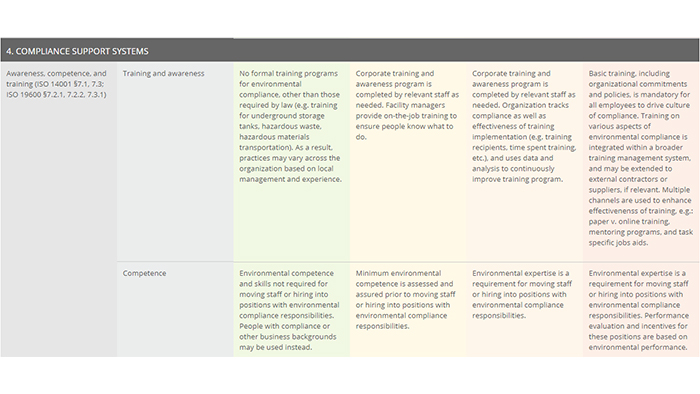
Dimension 15 | Internal Communication Mechanisms
Internal communications keep staff informed about the company’s compliance program and legal requirements. Communication can be expanded to share information on compliance and environmental performance as well as best practices to give employees a greater ability to optimize operations. It is also important that companies provide staff with an avenue for getting guidance on compliance and for reporting issues.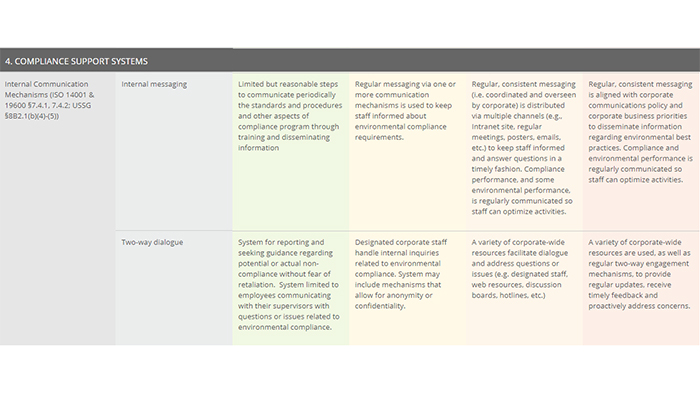
Dimension 16 | External Communication
In addition to staying in compliance by following regulatory reporting requirements, external communications can be used to build brand value among stakeholders and prevent reoccurrences of noncompliance through public accountability.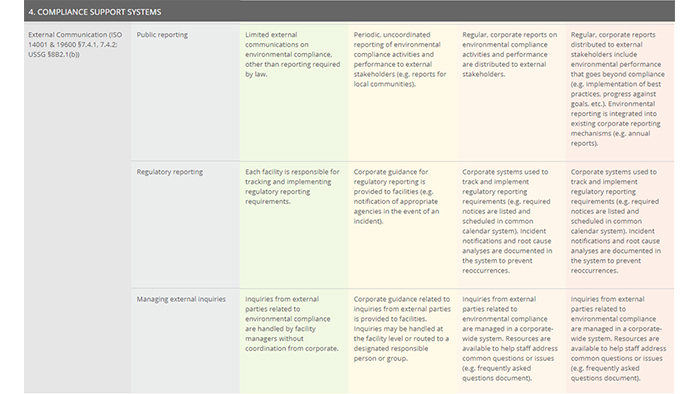
Dimension 17 | Documents and Records
While not exciting, documenting compliance obligations and implementing strong control systems is important for a successful compliance program.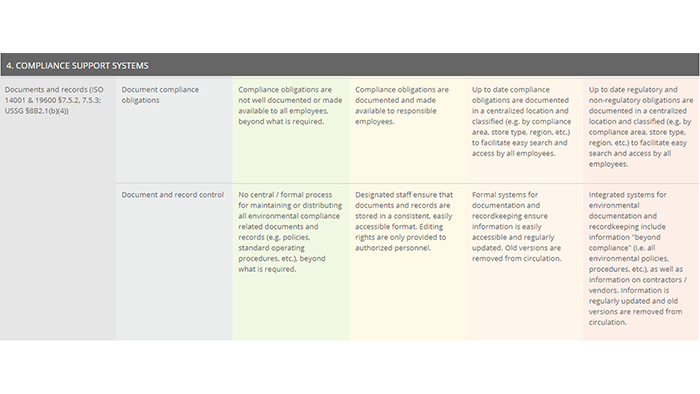
Dimension 18 | Emergency Response
Emergency response strategies depend in large part on the potential risks that an organization faces. Some companies choose to implement a centralized strategy and integrate policies for environmental emergencies with broader emergency management systems. Companies can also implement procedures that go beyond compliance to avoid or minimize the potential for environmental harm.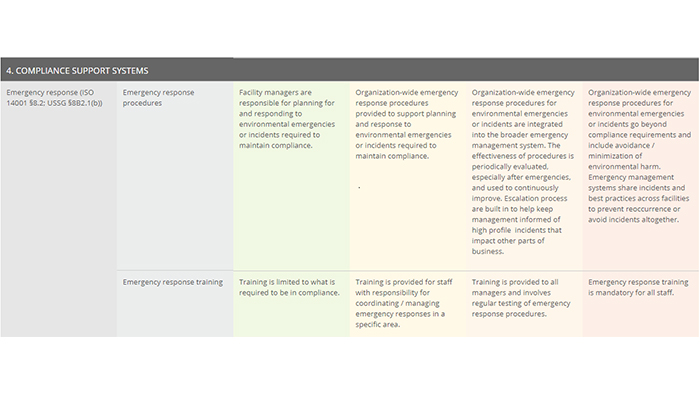
Tiffin Shewmake, Retail Compliance Center


